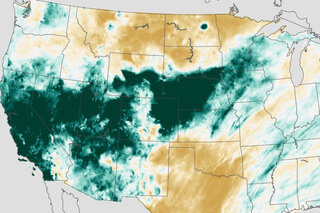As key habitat goes underwater, NOAA is relocating some endangered Hawaiian monk seals to higher ground.
Coral scientists have developed a new modeling approach for evaluating coral reef persistence under climate change scenarios. Aiming to improve coral restoration efforts, this new user-friendly framework aims to address the increasing vulnerability of these vital ecosystems.
Analysis of measurements taken during NOAA research flights in 2017 indicates that emissions from a single source, a magnesium refinery, may be responsible for a significant fraction of the fine particles that form the dense winter brown clouds hanging over Salt Lake City.
A series of atmospheric rivers have hit parts of the West, dropping record amounts of precipitation on California. The media, stakeholders, and the public have been asking what does this mean for drought in the region?
A new Climate Justice webinar is scheduled for February 3, 2023, at 1 p.m. CST. Led by SCIPP’s Dr. Simone Domingue, the purpose of this webinar series is to support socially-just climate adaptation that builds community resilience to coupled environmental and economic stressors and disasters.
For the last 40 years, the tropical Pacific has been trending toward a La Nina-like pattern. Will this trend continue into the future? What are the implications? Three experts dig into these questions and more.

Atmospheric rivers take a chunk out of California drought
January 25, 2023
The South Atlantic Ocean is the only ocean basin that transports heat towards the equator instead of the poles . It transfers vast amounts of Pacific and Indian Ocean waters to the North Atlantic. New research shows the South Atlantic Ocean has warmed from its surface to the deep ocean, upper ocean salinity has increased, and intermediate, deep water masses are freshening.
Antarctic sea ice has experienced a string of negative extent anomalies over the last several years. A new study finds the atmosphere might play a larger role that these negative anomalies than the subsurface Southern Ocean. Still, the ocean plays a critical role in the persistence of low sea ice extent.